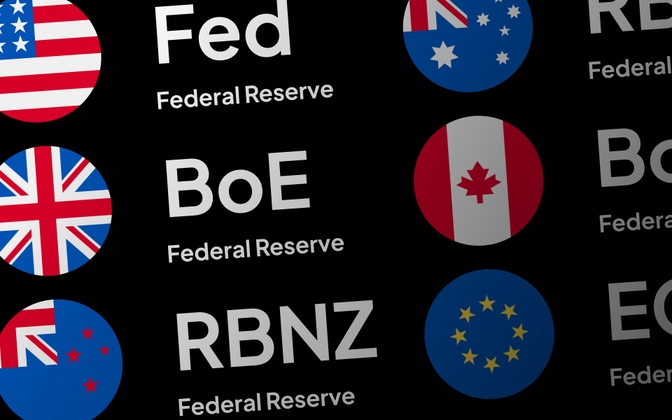- English (UK)
Analysis
Politics Increasingly Playing On Traders’ Minds
While elections in both the US, and likely in the UK, are starting to come into view, both likely remain a year away. Instead, there are more pressing short-term concerns for traders to grapple with.
Chiefly, in the US, we are rapidly approaching another government funding deadline, with the stalemate over spending in September having been resolved with a 45-day stopgap funding bill, and that period coming to an end on 17th November. While efforts continue in Congress to pass another such bill, likely kicking the can down the road to the end of next January, it remains uncertain whether the congressional GOP and Democrats are able to reconcile their differences and force through an agreement, particularly one that lacks aid funding for Israel and Ukraine. Though this is different from the debt ceiling matter, and there is no risk of a US government default here, another episode of this political soap opera will likely sharply focus market minds on the sustainability of the US’ fiscal path.
This was one of the reasons cited by Moody’s for last week’s lowering of the US credit outlook from ‘stable’ to ‘negative’, though the AAA credit rating was maintained. Though very few would reduce their exposure to Treasuries based on a ratings downgrade, particularly with both Fitch and S&P having already downgraded said rating, such a move may spark further jitters, perhaps counter-intuitively helping the USD amid an increase in haven demand.
_2023-11-13_11-29-54.jpg)
Meanwhile, in the UK, political developments have also been brought into the limelight, with PM Sunak carrying out a Cabinet Reshuffle, removing Home Secretary Suella Braverman, who was replaced by previous Foreign Secretary James Cleverly. Then, in a move that surprised even the most avid of Westminster watchers, former Prime Minister David Cameron was brought back into Government to run the Foreign Office, being ennobled in the process.
Though all of this is rather exciting for politicos, and gives plenty with which the media can fill column inches, the market impact of these moves was – predictably – relatively limited. This owes to the fact that Chancellor Hunt remains in post, that the new appointments are unlikely to result in significant changes to either economic or business policies, and that, particularly compared to the tumult of last autumn, the political landscape remains relatively stable.
From a political standpoint, the GBP remains primarily focused on the two significant upcoming fiscal events, namely the Autumn Statement in a couple of weeks, followed by next March’s Budget, the latter of which seems likely to result in a sizeable round of pre-election tax cuts, and other fiscal loosening. This will, of course, only be possible if inflation continues to recede, with the ONS releasing the latest CPI data this week, likely showing the headline gauge falling back below 5% YoY in October, albeit a decline largely driven by the energy-induced base effects from last year.
In any case, rally selling appears to remain the order of the day for GBP traders.
_2023-11-13_11-28-45.jpg)
Last week saw something of a textbook test, then rejection, of the 200-day moving average in cable, with price further extending declines below the 50-day moving average as last week drew to a close. That, at 1.2260, now stands as key upside resistance, and a level that the aforementioned rally sellers are likely to lean against, initially targeting a return to the bottom of the recent range at 1.2110, with a further decline towards the 1.20 handle still on the cards before the year is out.
Related articles
The material provided here has not been prepared in accordance with legal requirements designed to promote the independence of investment research and as such is considered to be a marketing communication. Whilst it is not subject to any prohibition on dealing ahead of the dissemination of investment research we will not seek to take any advantage before providing it to our clients.
Pepperstone doesn’t represent that the material provided here is accurate, current or complete, and therefore shouldn’t be relied upon as such. The information, whether from a third party or not, isn’t to be considered as a recommendation; or an offer to buy or sell; or the solicitation of an offer to buy or sell any security, financial product or instrument; or to participate in any particular trading strategy. It does not take into account readers’ financial situation or investment objectives. We advise any readers of this content to seek their own advice. Without the approval of Pepperstone, reproduction or redistribution of this information isn’t permitted.

